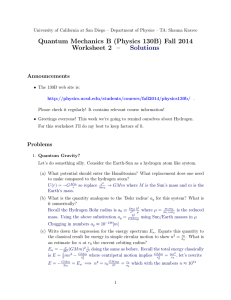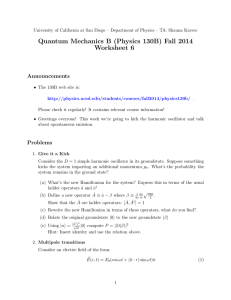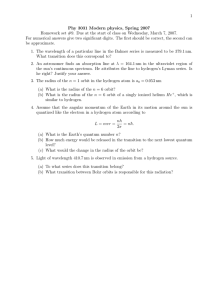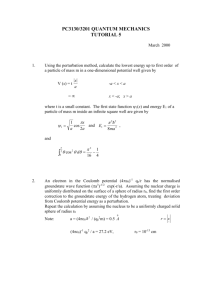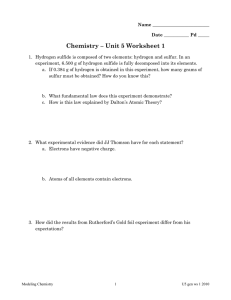Quantum Mechanics B (Physics 130B) Fall 2014 Worksheet 2 Announcements
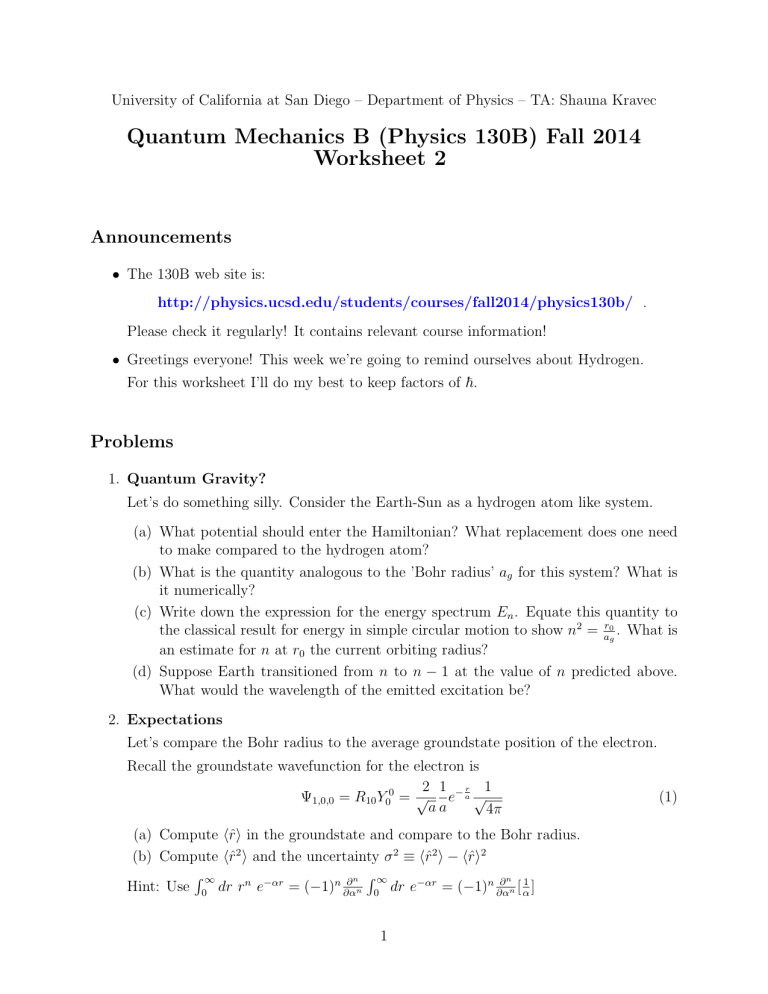
University of California at San Diego – Department of Physics – TA: Shauna Kravec
Quantum Mechanics B (Physics 130B) Fall 2014
Worksheet 2
Announcements
• The 130B web site is: http://physics.ucsd.edu/students/courses/fall2014/physics130b/ .
Please check it regularly! It contains relevant course information!
• Greetings everyone! This week we’re going to remind ourselves about Hydrogen.
For this worksheet I’ll do my best to keep factors of
~
.
Problems
1.
Quantum Gravity?
Let’s do something silly. Consider the Earth-Sun as a hydrogen atom like system.
(a) What potential should enter the Hamiltonian? What replacement does one need to make compared to the hydrogen atom?
(b) What is the quantity analogous to the ’Bohr radius’ a g for this system? What is it numerically?
(c) Write down the expression for the energy spectrum E n
. Equate this quantity to the classical result for energy in simple circular motion to show n 2 = r
0 a g
. What is an estimate for n at r
0 the current orbiting radius?
(d) Suppose Earth transitioned from n to n − 1 at the value of n predicted above.
What would the wavelength of the emitted excitation be?
2.
Expectations
Let’s compare the Bohr radius to the average groundstate position of the electron.
Recall the groundstate wavefunction for the electron is
Ψ
1 , 0 , 0
= R
10
Y
0
0
=
2
√ a
1 a e
− r a
√
1
4 π
(1)
(a) Compute h ˆ i in the groundstate and compare to the Bohr radius.
(b) Compute h ˆ
2 i and the uncertainty σ
2 ≡ h ˆ
2 i − h ˆ i 2
Hint: Use R
∞ dr r n
0 e
− αr = ( − 1) n ∂ n
∂α n
R
∞ dr e
− αr
0
= ( − 1) n ∂ n
∂α n
[
1
α
]
1
